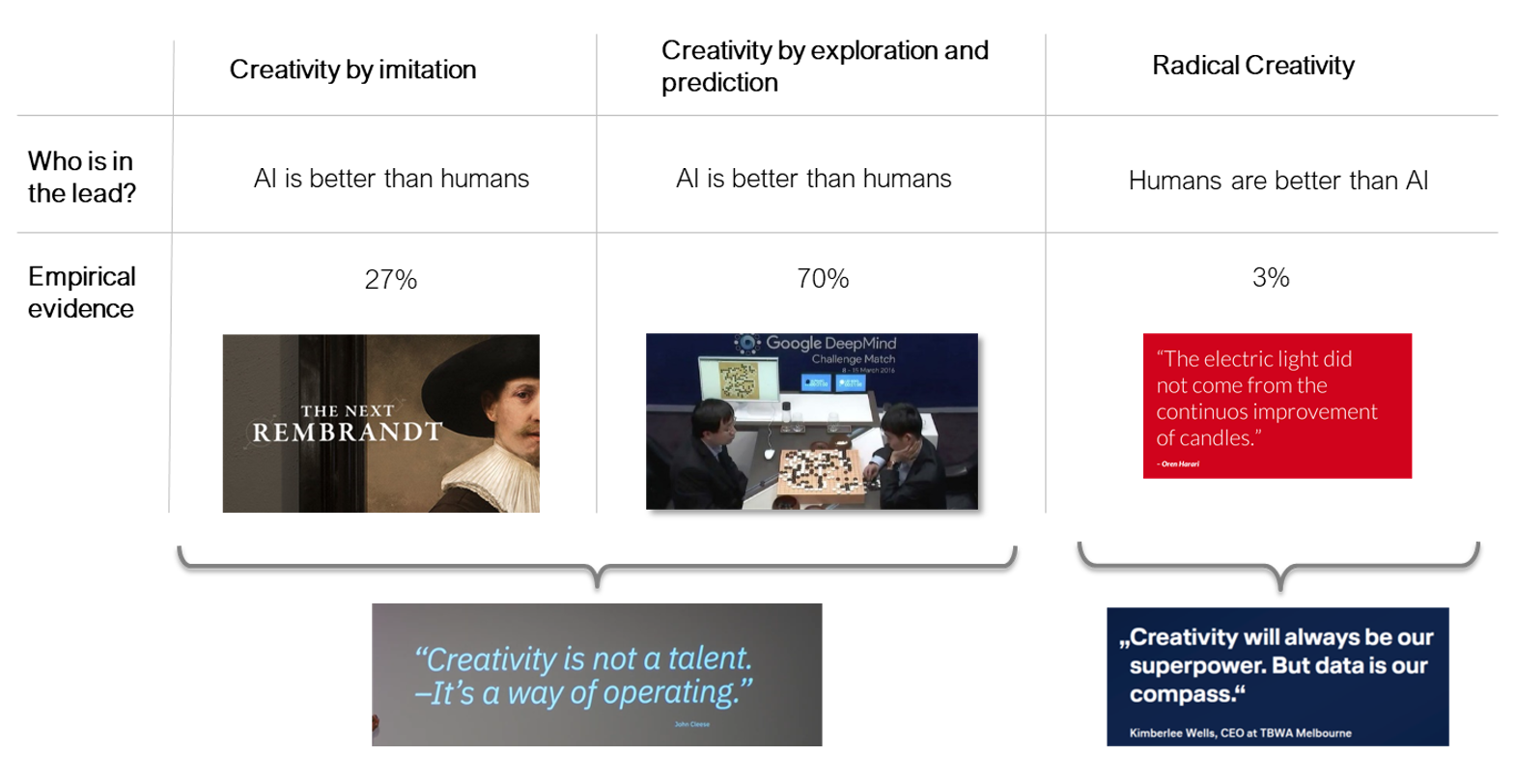Criticism is often voiced that foundation models like ChatGPT only reproduce or recompile existing content from the internet and are not really creative. In fact, ultimately only content that already exists digitally is recompiled and curated. The model cannot create new information out of thin air. It can, however, generate new sentences and texts by combining and advancing existing knowledge and contexts. To some extent, this criticism is put into perspective. If you ask journalists, for example, how they create articles, you often hear the answer that they search the internet and write an article based on an interesting find. In the art scene there is the provocative quote: “Good artist copy – Great artist steal”. In this respect, recycling existing content is, in a way, also immanent to the human way of working.
Another answer to the real novelty and creativity of content is provided by the TRIZ method from innovation research. TRIZ theory is based on the analysis of thousands of patents and inventions to identify recurring patterns and principles that occur in successful solutions. The scientist Genrich Saulowitsch Altschuller and his colleagues found that successful inventors used similar thought patterns and strategies to solve problems. On this basis, he developed a method that enables users to apply these patterns and strategies in a targeted manner, i.e. to recycle them in a certain way.
All in all, it can be said on the basis of these considerations that 27 % of the innovations can be explained by imitation (as well as GPT-3 can also imitate different text variants) and 70 % by exploration and prediction (analogous to the prediction of the next word in each case by GPT-3). Only 3% are radically creative and represent a true invention that has not existed before in the same or a similar form.

